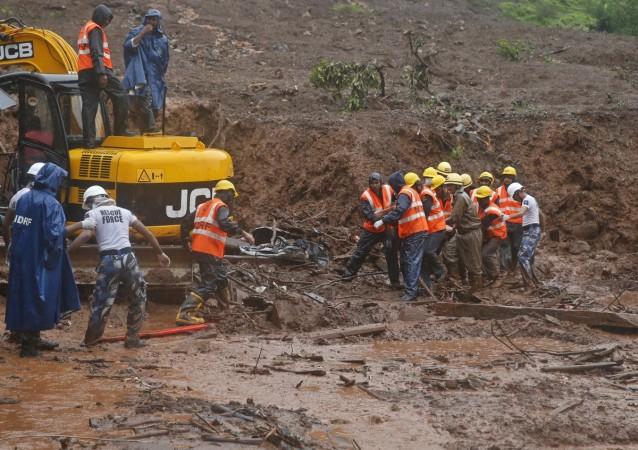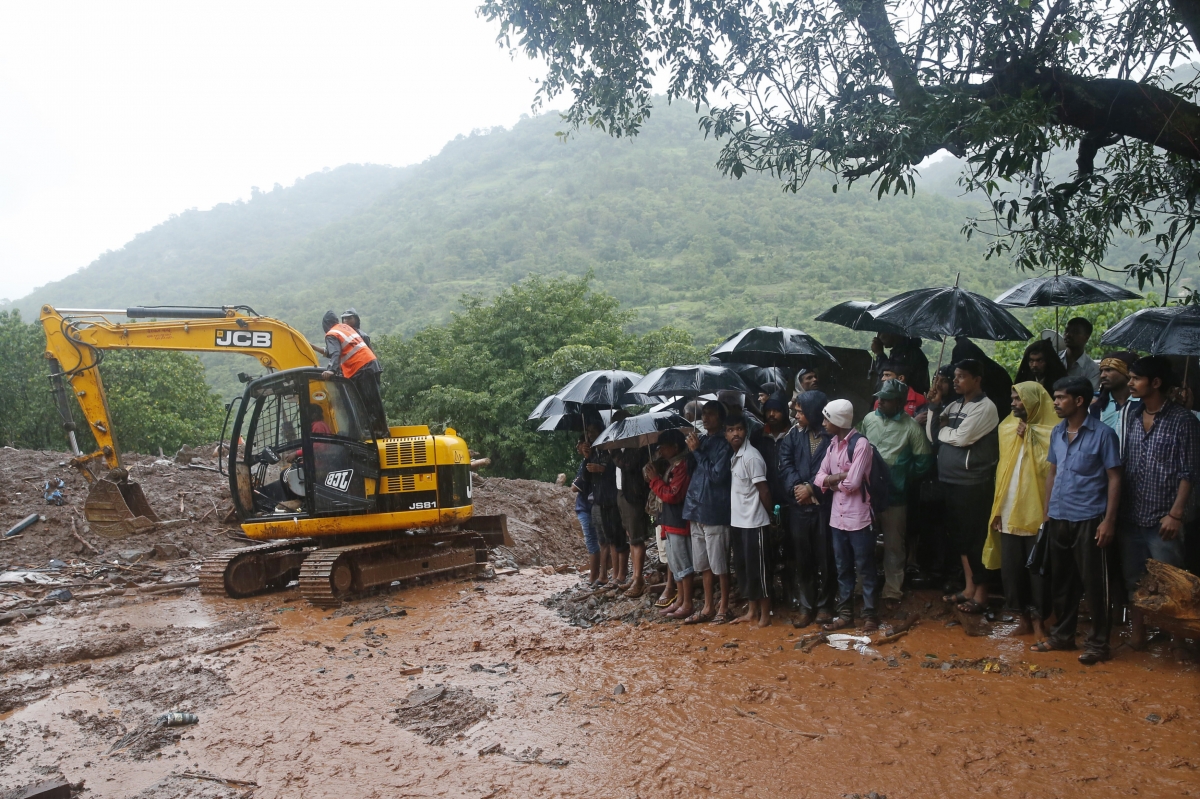
The death toll in the Pune village landslide has gone up to 51 even as rescue teams are struggling to dig out people buried under mud and the debris of houses. Among the dead 22 are women, 23 men and six children.
The experts claimed that the landslide did not truly happened because of two-days continuous rainfall, instead it occurred due to deforestation in the area for creating cultivable lands for the tribes under a government scheme, and for windmill projects.
An NGO Sahas Manch has reportedly blamed the government's Padkai scheme meant for generating jobs for the tribal society, allotting lands for cultivations. 25 steep slopes were allotted to them after levelling the lands in that area.
It claimed that proper measures were not taken while leveling the land, which caused several flaws. The trees were uprooted leading to soil erosion, which could have been prevented if stone bunds were built and nullhas were created to allow drainage.

"As many as 25 plots were measured on the hill above the houses that were buried on Wednesday in the landslide. The measuring was done so wrongly by government officials about a year ago that the soil has lost its holding capacity. Plots were marked on steep slopes and earth-moving machines and tracked Poclain excavators were used to level the land for cultivation," Times of India quoted NGO President Dhananjay Kokane.
Ecologist Madhav Gadgil blamed deforestation for the Windmill Project along the hillside to be another reason for the landslide. While the unofficial data suggested that around three lakh trees were felled down for the project, the official data shows a much less figures- 28,000.
Several experts claimed that the area was never prone to landslides until it was leveled for cultivation.
"The region in and around the Dimbhe dam is not known for landslides. However, in the past few years, people have reported about unstable slopes. The villagers have levelled the land on this hill to such an extent that the land started losing its rigidity and when the rain came pouring down, the hill lost stability and came crashing down," TOI quoted landslide expert Satish Thigale.

The experts hold the view that if deforestation continues to carry out at the present rate, India would witness more of such natural disasters.
"It's become far more important to protect forests and mountains. Climate change will see more extreme weather events in future. We have to adopt new technology to construct roads and implement other unavoidable projects so that slopes of the mountains are not affected, Environmentalist and CSE chief Sunita Narain said.
The experts view that the afforestation methods being adopted by the government is not helping to curb the menace caused by forest clearances. Instead of planting trees on the roadside there's a need to create new forest covers to prevent natural disasters from occurring, they suggested.

"Forests are a major stabilizing component that protect soil and water and reduce floods and landslides. Deforestation and forest degradation due to reckless infrastructure development, agriculture and mining are primary causes for landslides, forest campaigner of Greenpeace India Nandikesh Sivalingam said.

















